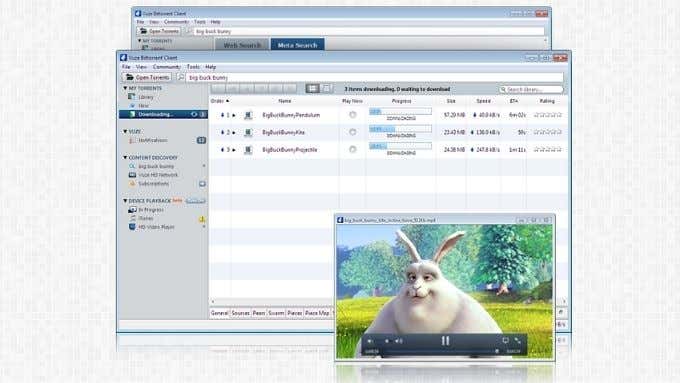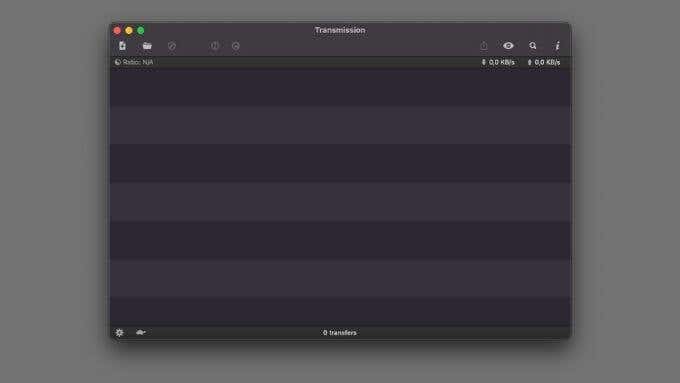Yet, torrenting itself isn’t illegal and can be a cost-effective and useful way to share files with people without paying for online file storage. So, if you’re trying to open a Torrent file on Windows or Mac, but aren’t sure how to do it, here’s what you need to know.
A Quick Recap of How Torrents Work
BitTorrent is a “peer-to-peer” file transfer protocol. In short, this means that it allows data to be transferred from one computer to another directly. Torrents work through networks like the public internet and are decentralized. That’s unlike downloading a file hosted on a centralized server. What makes BitTorrent so popular and effective is that it can quickly share a file to millions of people using a network of computers that belong to regular people. It can do all of this without ever involving servers or data centers. It starts with an initial “seeder” who has a complete copy of data that’s to be shared. Then, people who join the torrent begin to download the data from that first seeder, but as soon as any data arrives on their computers, they start sharing it with other “peers,” spreading the bandwidth load around. Once complete copies are on the computers of peers, they can become seeders as well. These additional seeders could keep the torrent going by themselves if the original seeder goes offline. When you’re downloading a file using BitTorrent, the various bits of the file come from other torrent members. Not just from one specific seeder.
What’s in a Torrent File?
A torrent file doesn’t contain any of the data from the download, which is why they’re so small. Therefore, if you download a torrent file, you haven’t downloaded the data you wanted. Instead, the torrent file contains information about the data. This includes details such as the list of files included in the torrent and their sizes. It also includes the web address of at least one torrent tracker. A torrent tracker is a type of server that helps the various peers in the torrent “swarm” find each other. Trackers can be public or private, but using a public torrent tracker can come with privacy issues. This is one of the main reasons an alternative to torrent files, known as “magnet” links, has become the more popular solution.
Torrents vs. Magnet Links
Unlike torrent data, a torrent file must be hosted somewhere, such as a traditional file server. If the sites hosting the torrent file go down, those who aren’t already part of the torrent can’t connect to it. Magnet links solve this problem by requiring no central server to host them. Anyone who’s already a part of a torrent can generate a magnet link to allow new people to join. This makes it virtually impossible to shut down a torrent by denying access to it. We recommend using magnet links instead of torrent files whenever possible. If you want to store a magnet link, you can simply paste it as plain text in the document format of your choice.
Using a Torrent Client
Whether you’re using torrent files or magnet links, you’ll have to make use of a BitTorrent client to download anything. A torrent client is a software application that can interpret the contents of a torrent file or magnet link and handle the file-sharing process. You’ll need a torrent client for your specific operating system, so we’ll briefly cover a few prime examples for Windows and Mac. Whatever Torrent client you go with, opening a torrent file is usually no harder than opening any other file by (for example) double-clicking it. The torrent client should be associated with the file type and open the file automatically. You can also open torrent files manually from within a client by using the same general File > Open menu equivalent you would in an application like Word.
Torrent Clients for Windows
If you’re a Windows user, the easiest recommendation to make is uTorrent. This is by far the most popular and well-supported torrent client. It’s small, fast, and simple to use. The next client worth taking note of to open Torrent files is Vuze, formerly known as Azureus. It’s much more complex and dense than uTorrent, but offers many features that have made it popular. For example, it lets users discover content to download via torrent without using a third-party service. It also offers a built-in video player that can preview video files along with a list of other neat features we don’t have the space to list here. Do note that the free version of Vuze is ad-supported.
Torrent Clients for Mac
If you’re a Mac user, then the most common recommendation you’ll hear is for a client called Transmission. It’s simple, clean, and well-integrated into the macOS environment. However, if you become a more sophisticated torrent user, you may find yourself outgrowing Transmission. If you need more features and control, qBittorrent is the next prime candidate to open Torrent files. It’s an Open Source application that looks a little rough and dated, but offers granular control of your torrenting experience.
Using VPNs With Torrents
While torrenting itself isn’t illegal, the technology is used so widely for copyright infringement that many service providers throttle or even block torrent traffic. That’s why it may be a good idea to pair a VPN (Virtual Private Network) with your torrent use so that your service provider (or anyone else monitoring your connection) won’t know what you’re doing. If your service provider throttles torrent web traffic, a VPN is also an excellent way to get faster downloads. For more information, check out 5 Great VPN Apps You Can Actually Trust and What Is a VPN and What Is It Used For?
Using a SeedBox
Another great tip for aspiring torrenters is to avoid opening and running torrent files on your local computer. Instead, consider paying a small monthly fee to rent a seedbox. This is a computer located remotely in a data center somewhere, whose only job is to download and seed torrents. You simply log into the seedbox and then point it to the torrent file or magnet link. The torrent’s content rapidly downloads to the seedbox hard drive. From there, you can download it to your local computer using a direct encrypted connection. Seedboxes have many privacy and performance advantages for torrent users, and we consider them the optimal solution for anyone who makes regular use of torrents. If a seedbox sounds like an intriguing option to you, we suggest you read Use a Seedbox and WinSCP for Fast, Private Torrents to get things started. After that, you’ll probably never want to torrent another way again.







